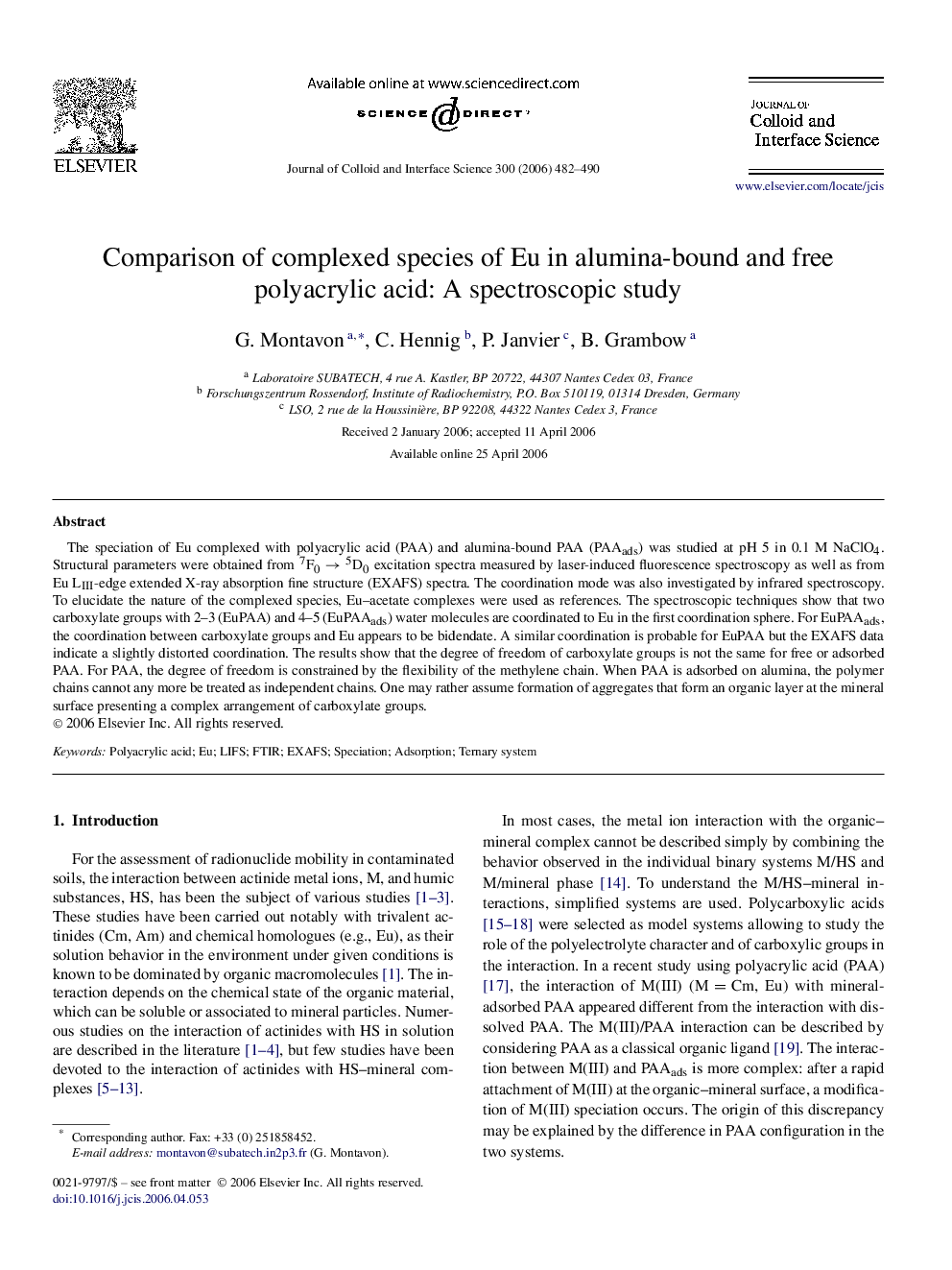| Article ID | Journal | Published Year | Pages | File Type |
|---|---|---|---|---|
| 612983 | Journal of Colloid and Interface Science | 2006 | 9 Pages |
The speciation of Eu complexed with polyacrylic acid (PAA) and alumina-bound PAA (PAAads) was studied at pH 5 in 0.1 M NaClO4. Structural parameters were obtained from 7F0 → 5D0 excitation spectra measured by laser-induced fluorescence spectroscopy as well as from Eu LIII-edge extended X-ray absorption fine structure (EXAFS) spectra. The coordination mode was also investigated by infrared spectroscopy. To elucidate the nature of the complexed species, Eu–acetate complexes were used as references. The spectroscopic techniques show that two carboxylate groups with 2–3 (EuPAA) and 4–5 (EuPAAads) water molecules are coordinated to Eu in the first coordination sphere. For EuPAAads, the coordination between carboxylate groups and Eu appears to be bidendate. A similar coordination is probable for EuPAA but the EXAFS data indicate a slightly distorted coordination. The results show that the degree of freedom of carboxylate groups is not the same for free or adsorbed PAA. For PAA, the degree of freedom is constrained by the flexibility of the methylene chain. When PAA is adsorbed on alumina, the polymer chains cannot any more be treated as independent chains. One may rather assume formation of aggregates that form an organic layer at the mineral surface presenting a complex arrangement of carboxylate groups.
Graphical abstractThe question addressed in this study is to assess the effect of the adsorption of an organic polyelectrolyte onto a mineral phase on its complexation properties for metal ions.Figure optionsDownload full-size imageDownload as PowerPoint slide
